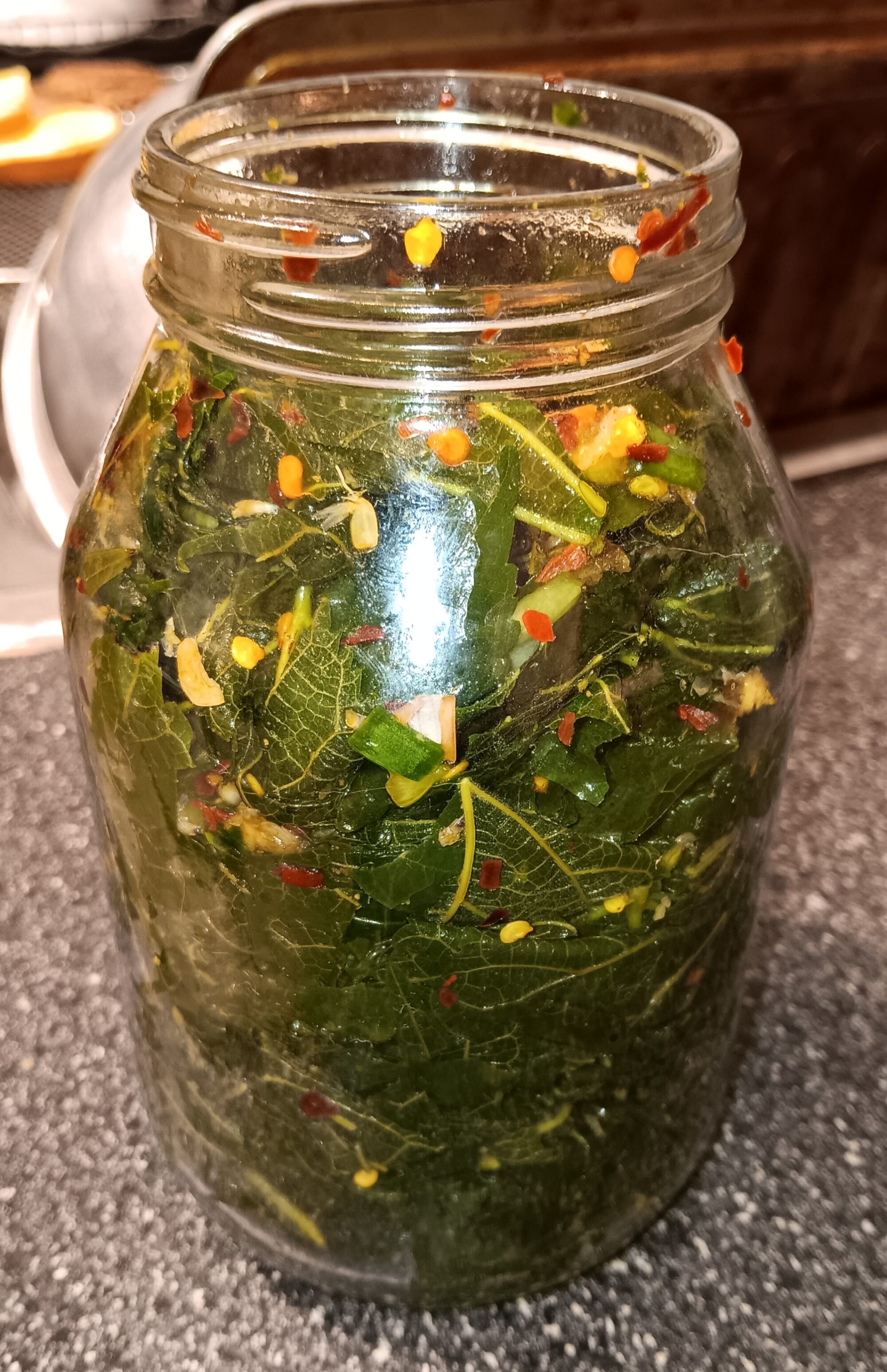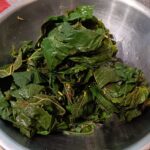Sangyeop Kimchi
Sangyeop Kimchi, Mulberry Leaf Kimchi
Kimchi made using mulberry leaves instead of cabbage.
Servings: 14
Equipment
- 1 Cookpot with boiling water
- 1 Canning jar with lid
Ingredients
- 1 heaping mixing bowl of freshly picked mulberry leaves Pick more than you think you need. They shrink with the blanching and packing.
- 2 cloves fresh garlic, chopped
- 1 tsp fresh or dried ginger, chopped
- 2-3 tbsp anchovy and/or soy sauce also called fish sauce
- 1 fresh green onion, chopped
- 1 tbsp crushed red pepper
Instructions
- First, chop and blanch all the leaves. This helps to kill any germs and also to soften the leaves, which are a bit chewy. Leaves can also be stir-fried.
- While the leaves are blaching, gather the ingredients for the kimchi. Here I have used a fresh onion from the garden. You will also need garlic, anchovy and/or soy sauce, ginger, and red pepper to taste. I also optionally added some dehydrated tiny shrimp, but that's because I have them and they need to be used up.
- Placed the blanched leaves in cool, salty water and let sit for at least an hour. Here I have weighed down the leaves with a plate and a jar.

- Then rinse all the salt from the mulberry leaves, and toss with sauce ingredients. Pack into a jar or two, and place in the refrigerator.
- The longer this ferments, the more discolored it becomes, so it recommended to eat fresh or with the first couple of weeks. Enjoy!
Here’s an interesting video of a similar recipe using the white mulberry native to Asia. Note how the chef selects fresh new-growth leaves for his use. He’s using rice starch, red pepper, fish sauce, soy? sauce, and chopped anchovies. Note how he plates the kimchi at the end of the video – for eating fresh that day.

